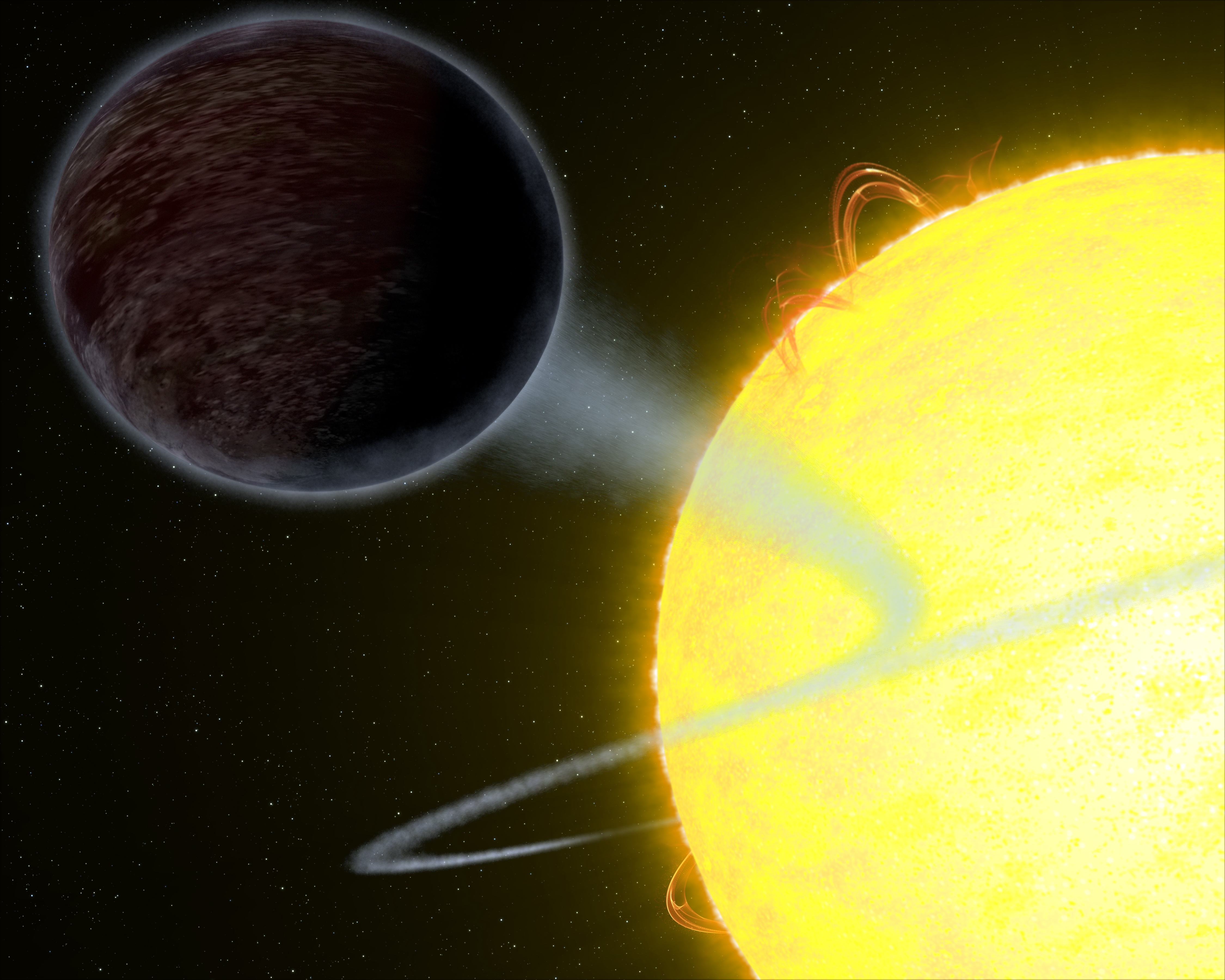Astronomers have discovered a spectacular planet. Almost no light is reflected from the strange extremely hot gas planet.

Recently, a team of astronomers discovered a planet that puzzles them – a pitch black planet that swallows all light.
The amount of light a planet reflects back is determined by its albedo effect, and the albedo is so low for this exoplanet that it is one of the darkest objects ever observed in the universe. Only about six percent of the light that hits the planet is reflected back.
Hot gas giant
The mysterious planet is called ‘WASP-12b’, it is twice the size of Jupiter and belongs to the group of planets called “Hot Jupiters” – a group of large and extremely hot gas planets.
These planets often have very narrow orbits around their respective stars, and it takes just over a day for WASP-12b to orbit its Sun-like star WASP-12A about 1400 light-years away. The black planet is tidally locked and always turns the same side towards its star, just as our own Moon.
Because it is so close to its parent star, the gravitational pull of the star has stretched WASP-12b into an egg shape.
2,500 degrees
There is a day and a night side on WASP-12b, and this is probably also the explanation of its light swallowing properties. The day side burns at temperatures of 2 538 ° Celsius (4,600 degrees Fahrenheit) – as much as a small star, which means that only a few molecules can remain intact.
This means that clouds cannot form on planet’s day side, which usually reflects light back to space. Instead, the light penetrates into the atmosphere of the planet where it is absorbed and converted into heat. The planets night side is ‘only’ about 1400 ° Celsius (2,000 degrees Fahrenheit cooler), which allows for water vapor and clouds to form.
There are other hot Jupiters that have been found to be remarkably black, but they are much cooler than WASP-12b. For those planets, it is suggested that things like clouds and alkali metals are the reason for the absorption of light, but those don’t work for WASP-12b because it is so incredibly hot
– Taylor Bell, lead author of the paper published The Astrophysical Journal Letters, Master’s student in astronomy at McGill University.
Most of the so-called “Hot Jupiters” reflect about 40 percent of the light that hits them. Therefore, this discovery gives astronomers a deeper understanding of dark gas giants.
The researchers determined the planet’s light-eating capabilities by the so-called ‘transit method’, using Hubble’s Space Telescope Imaging Spectrograph, to search in mostly visible light for a tiny dip in starlight as the planet passed directly behind the star.
Reference:
Taylor J. Bell1 et al. The Very Low Albedo of WASP-12b from Spectral Eclipse Observations with Hubble The Astrophysical Journal Letters






















